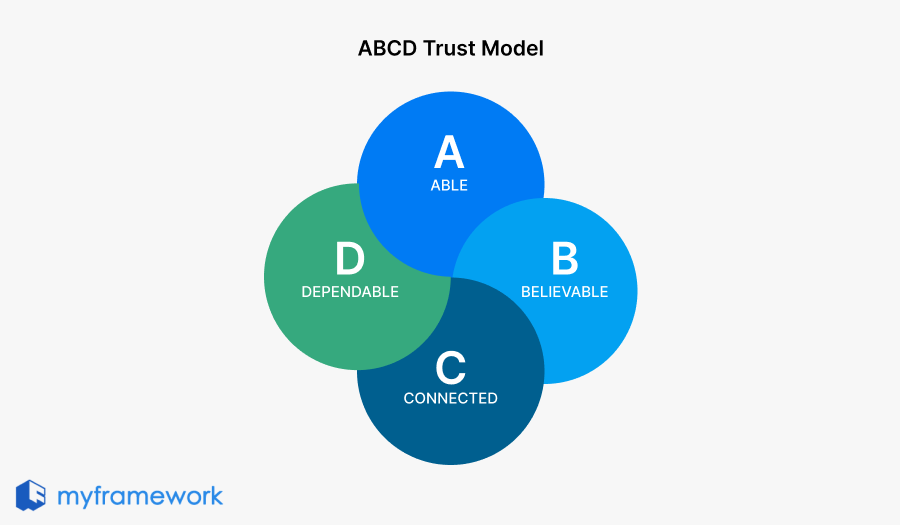A simple framework that explains trust through Able, Believable, Connected, and Dependable.
Being Trusted Is Hard
Many teams struggle not because of a lack of skill or strategy, but because of a lack of trust.
When people lack trust in their leaders, they withhold ideas, avoid risks, and disengage. In contrast, high-performing teams are built on trust, not control.
To help leaders become truly trustworthy, leadership expert Ken Blanchard developed the ABCD Trust Model. This model breaks trust into four key behaviors that anyone can learn and apply.
The Four Core Elements of the ABCD Trust Model

A – Able: Show You Know What You’re Doing
Being “able” means demonstrating competence.
You need to know how your team actually does the work. People trust leaders who clearly understand the work and can provide meaningful direction.
When common challenges arise, you’re ready to step in with support, but you don't take over, just show power.
B – Believable: Say What You Mean, Mean What You Say
Believability is rooted in integrity.
People watch what you do more than what you say. You build trust when you tell the truth, even when it’s hard. You follow through on promises, even when it’s inconvenient. Most importantly, you treat everyone fairly.
C – Connected: Show You Care About People
Leaders who connect with others build real relationships, so please remember, you lead with empathy, not ego.
When you give feedback, it’s to help someone grow, not to make them feel small.
D – Dependable: Follow Through Every Time
Being dependable means your team can count on you.
This includes a couple of points:
- You do what you said you would do, not just what’s urgent.
- You stay consistent when things get uncertain
- You don’t shift direction without reason.
- You respect other people’s time and energy like it’s your own.
Real-World Ways to Use the ABCD Trust Model
- During a team meeting, take time to ask how everyone is doing—not just what tasks are finished.
- When giving feedback, highlight effort and potential, not just errors or missed targets.
- If a deadline changes, communicate early and explain why. Follow up with a new plan.
- When you don’t have an answer, admit it honestly and explain how you’ll find out.
- If you notice team tension, don’t ignore it. Step in respectfully and help clarify roles or expectations.
Final Thought
The most powerful leadership isn’t about control, but about earning and multiplying trust.
By using the ABCD model, you create an environment where people feel safe, respected, and valued. As trust grows, engagement and performance follow. You’ll see fewer conflicts, stronger collaboration, and higher commitment from your team.


